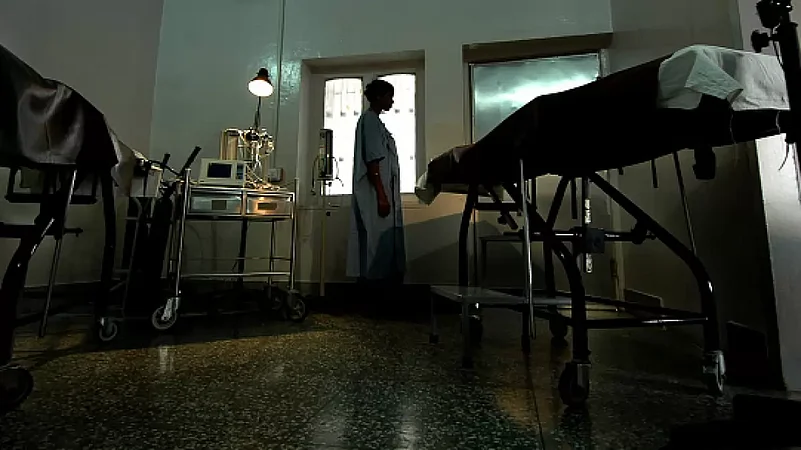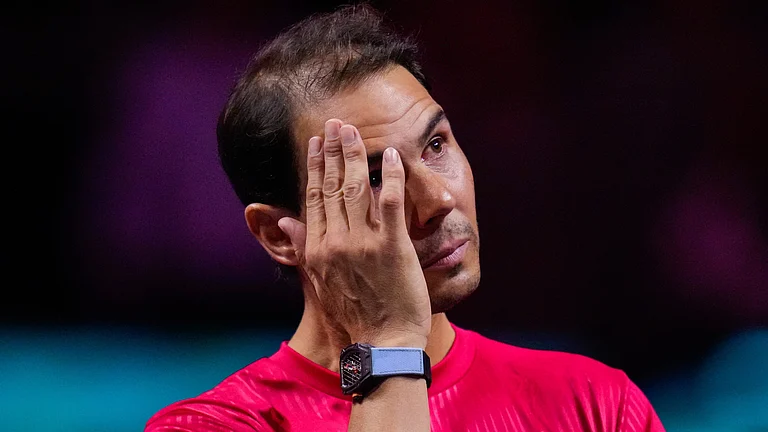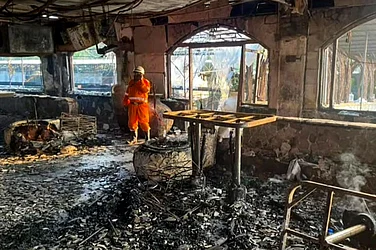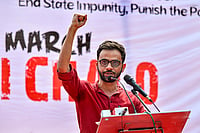While considering the plea of a 26-year-old woman for medical termination of the 26-week-old fetus, Chief Justice of India DY Chandrachud observed that India is far ahead of other countries with regard to abortion laws. He also remarked that Indian law gives paramountcy to the life of the mother.
How close does this observation go to reality? Does Indian law respect a woman’s autonomy over her body? A closer examination of the Medical Termination of Pregnancy (MTP) Act, 1971 and the prevailing court judgments present a less sanguine perspective. Even the recent 2021 amendment to the MTP Act, rather than broadening access to abortion services, tends to restrict it.
The foundation of India’s abortion laws can be traced back to British jurisprudence, which historically regarded abortion as a moral transgression. The Indian Penal Code (IPC) in sections 312 to 316 criminalised “causing miscarriage”, categorizing “induced abortion” as an offence punishable with up to three years of imprisonment. Notably, the punishment for the pregnant woman who “caused miscarriage” was even more severe, carrying a minimum prison term of seven years.
Scholar KD Gaur in his work ‘Abortion and the Law in India’ elucidates that the framers of the IPC deliberately refrained from using the term “abortion” and instead opted for the phrase “causing miscarriage”, presumably to avoid antagonising the sensibilities of the traditionally rooted Indian society. Significantly, the term “miscarriage” remained undefined in IPC. In a historic case dating back to 1886, a woman faced legal penalties for causing a miscarriage in the early stages of her one-month pregnancy. Although the lower court acquitted the woman, showing leniency, the High Court ultimately ruled the acquittal unlawful, emphasising the prospective mother’s absolute duty to safeguard the infant from the moment of conception.
The MTP Act of 1971 heralded a notable departure from the stringent framework of the (IPC that criminalised abortion. This legislative advancement was the culmination of a series of deliberations in the 1960s, which expressed growing concerns about the prevalence of unlawful and unsafe abortions within the country. In response, the government convened a committee led by Dr Shanti Lal Shah, charged with conducting a comprehensive examination of the medical, legal, and socio-cultural aspects of abortion in India. The recommendations put forth by this committee in 1966 centred on the legalisation of abortion and the establishment of a comprehensive abortion care framework. The primary focus of these recommendations was to mitigate unsafe abortions and maternal mortality rates.
However, the MTP Act of 1971, despite being hailed as a significant stride towards women’s welfare, failed to address abortion as a matter of right. Under this act, abortion was legalised only under specific circumstances. This encompassed scenarios where termination was necessary to safeguard the life of a pregnant woman or to prevent severe injury to her physical or mental health. Furthermore, the act permitted pregnancy termination in cases involving a substantial risk of congenital anomalies in the child. The Act also took a more lenient approach to pregnancies resulting from rape or contraceptive failure, permitting their termination. Abortion was permissible for a broad spectrum of conditions up to 20 weeks of gestation as outlined in the 1971 Act.
The 2021 amendment to the MTP Act represented another notable expansion of the law’s scope, particularly by extending the permissible period of gestation to 24 weeks. A historic aspect of this amendment was the inclusion of unmarried women within the ambit of the act. Prior to the 2021 amendment, abortion was legally sanctioned solely for married women under any circumstances.
The amendment broadened the criteria by which women could access pregnancy termination services. In addition to rape survivors, the law now permits abortion for women who have conceived through incestuous relationships. The amendment introduced provisions for women whose marital status undergoes a change during the gestational period, such as widowhood or divorce. Furthermore, the amendment allows for pregnancy termination in cases involving women with physical disabilities as specified under the Rights of Persons with Disabilities Act of 2016, as well as women suffering from mental illness.
However, the law has yet to include the LGBTQ community in the purview of the Act. The legal framework overseeing medical termination of pregnancy in India, while subject to progressive court rulings, still harbours traces of patriarchal, hetero-normative, and transphobic elements. Despite repeated appeals from scholars and the LGBTQ community, the legislation has yet to acknowledge the concept of ‘a pregnant person’. The act exclusively employs the term ‘pregnant woman’, thereby neglecting the potential inclusion of the LGBTQ community within its scope.
Notwithstanding the evolution of legislation governing pregnancy, one constant remains: the ultimate authority over gestation resides with the state. The prerogative to decide whether a pregnancy can be terminated rests with the state and this determination is executed through medical boards operating under the purview of respective state Governments. Despite the provisions established within the law, women often encounter significant obstacles when seeking access to medical services for pregnancy termination. An analysis of judicial decisions made between 2016 and 2018 conducted by Pratigya, an organisation dedicated to promoting gender equality and safe abortion practices, has unveiled noteworthy findings in this regard.
During 2016-2019, a total of 194 writ petitions from women seeking medical termination of their pregnancies were presented before the Supreme Court and various high courts in India, as noted by Pratigya. Despite the fact that each case emerged from distressing circumstances, including instances of rape, threats to life, endangerment of mental health, or fetal abnormalities, the outcomes exhibited a considerable degree of variation and unpredictability. According to Pratigya, this lack of uniformity tends to undermine the credibility of the legislation that significantly impacts the lives and physical autonomy of women. It also erodes women’s trust in the judicial system’s capacity to acknowledge and respect their choices regarding their own bodies.
Instead of widening the scope of the legalisation of abortion, the law makes it harder for women, according to experts. The requirement of specialised doctors for the constitution of medical boards practically makes pregnancy termination service inaccessible to women as found in a study conducted by Centre for Justice, Law and Society (CJLS) and Jindal Global Law School.
The study finds that most Indian states and UTs record a dire shortfall (of 80 per cent or more) of obstetricians and gynaecologists. Constituting functional state or district-wise medical boards is practically impossible. It is also found that in some states, at-home abortions were twice as many as public-sector abortions.
The study further reveals that many states such as Tamil Nadu, Arunachal Pradesh, and Gujarat have recorded a near complete absence in the availability of certain specialists such as gynaecologists and obstetricians, paediatricians, and radiologists, especially in rural areas.
“In rural North India, there is on average an 84.2 per cent shortfall in obstetricians and gynaecologists, a 68.76 per cent shortfall in paediatricians, and a 74.5 per cent shortfall in radiologists. Rural South India fares similarly, with a 57.2 per cent shortfall in gynaecologists and obstetricians, a 61.4 per cent shortfall in paediatricians and a 68 per cent shortfall in radiologists. In East and North-east India, the research revealed a 100 per cent shortfall of paediatricians in Arunachal Pradesh, Meghalaya, Mizoram and Sikkim and a near complete absence of other specialists as well,” states the report.
The study argues that since the MTP amendments required these three specialist doctors to be part of the board, along with other members that the State/UT may appoint, it would be nearly impossible to constitute such boards in most regions of the country.
The introduction of medical boards, a concept not originally included in the 1971 MTP Act, and the requirement for third-party authorisation in abortion procedures, were not part of the initial legislation. According to the study of CJLS, incorporating these elements into an already hetero-patriarchal, discriminatory, and exclusionary legal framework is likely to exacerbate the problems, resulting in more unsafe abortions, increased post-abortion complications, and higher mortality rates among those seeking abortions.
The international policies find medical boards and third-party authorisation as significant barriers to accessing safe abortion services. For instance, the World Health Organization (WHO) has strongly recommended that states eliminate such requirements from their legal and policy frameworks. They emphasise that these authorisation procedures disproportionately burden economically disadvantaged women, adolescents, those with limited education, and individuals exposed to domestic conflict and violence, thereby creating inequality in access.
A 2019 study published in the British medical journal BMJ Global Health unveiled that approximately two-thirds of abortions in India are categorised as unsafe. This comprehensive study examined a sample of 1.8 million women hailing from nine Indian states, collectively representing half of India’s total population. While regional variations exist, the research underscores a particularly heightened risk of unsafe abortions within India’s vulnerable and marginalised communities. The study pinpointed several key determinants of unsafe abortions, including socioeconomic factors like poverty, rural residency, caste and indigenous background, Muslim identity, education, and age.





















